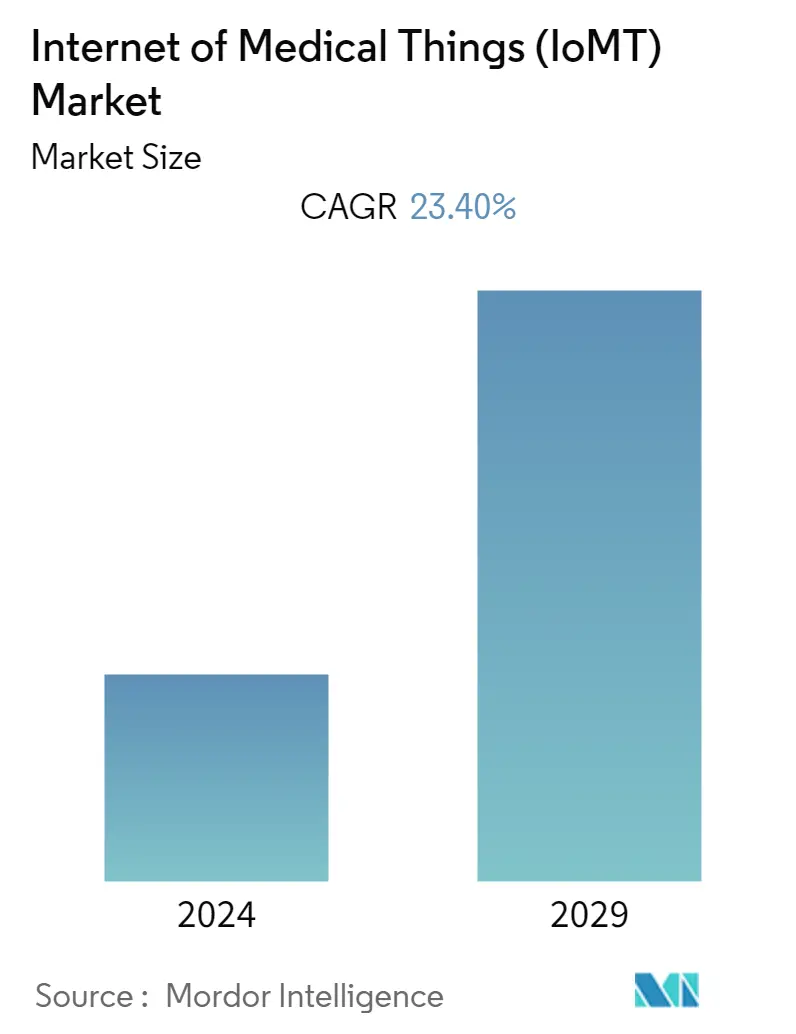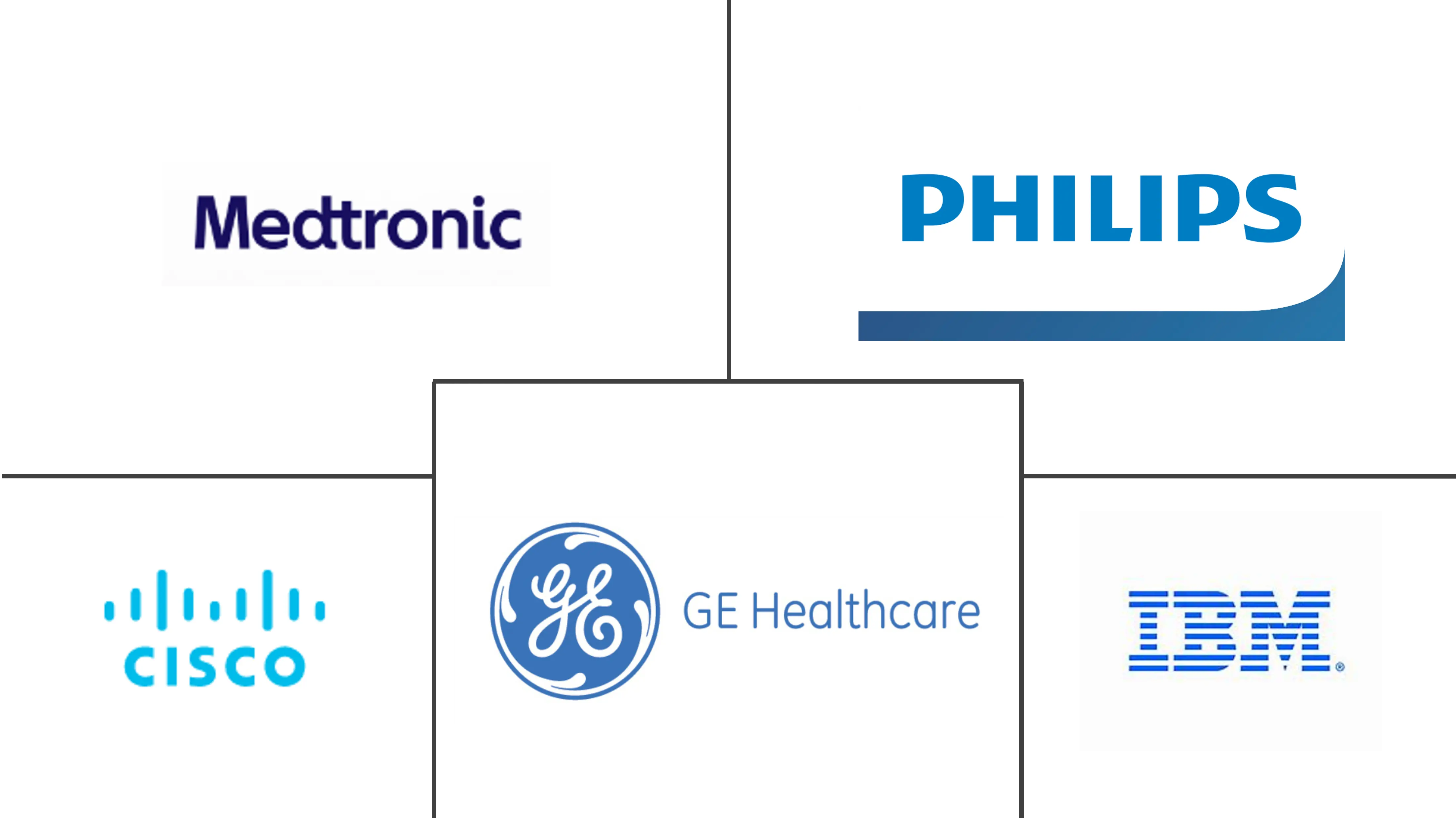Market Size of Internet of Medical Things (IoMT) Industry

| Study Period | 2019 - 2029 |
| Base Year For Estimation | 2023 |
| CAGR | 23.40 % |
| Fastest Growing Market | Asia-Pacific |
| Largest Market | North America |
| Market Concentration | High |
Major Players
*Disclaimer: Major Players sorted in no particular order |
Need a report that reflects how COVID-19 has impacted this market and its growth?
Internet of Medical Things Market Analysis
- The "Internet of Medical Things" (IoMT) market is anticipated to register a CAGR of 23.4% over the forecast period. The increasing need for cost reduction in medicinal delivery and the increasing penetration of connected devices are some of the significant factors influencing the growth of the IoMT market. The need to improve healthcare outcomes, as well as the evolution of high-speed networking technologies, are particularly promising areas of market advancement in IoMT devices.However, the need for proper IoT technology skills across healthcare organizations is anticipated to obstruct the market growth of the IoMT market.
- With several advantages like enhanced patient safety, reduced medical errors, seamless transfer of electronic health records (EHR), better disease management, remote monitoring of chronic diseases, and improved drug management, IoT medical devices have the potential to transform healthcare and improve patient outcomes while, at the same time, helping to reduce costs and make better-informed care decisions with more speed and ease.
- The increasing penetration of connected devices is a factor that drives the market. Connected medical devices can connect to the internet through WiFi, Bluetooth, or radio transmission. These medical devices have digital capabilities beyond their essential function of diagnosing, treating, curing, or preventing disease, allowing them to integrate with and connect to other networks and systems. The IoMT combines data (patient information or performance data), people (patients, clinicians, and caregivers), and processes (healthcare delivery and patient support) with the help of connected medical devices and mobile medical applications.
- The benefit of IoMT is that it provides fewer mistakes and accurate diagnoses at a lower cost, thereby improving healthcare outcomes that drive the market. With the Internet of Things and mobile apps, patients can send their health information to their doctors, which helps doctors keep an eye on chronic diseases.
- The cost of interoperability and connectivity solutions for different medical devices is considerably high. Moreover, IT support and maintenance services, which include modifying and upgrading software per changing user requirements and maintaining an efficient IT infrastructure, represent a recurring expenditure. This accounts for a large share of the total cost of ownership. Also, post-sale custom interface development for device integration requires additional verification and validation to ensure solution accuracy and completeness. This further increases the total cost of ownership for healthcare providers. As a result of the high costs involved, small healthcare facilities, especially in emerging countries, are reluctant to replace their legacy systems with advanced IoT-enabled devices.
- Following COVID-19, the healthcare industry saw an increased demand for healthcare solutions for critical patient treatment and monitoring. To improve the efficiency of doctors and other coroners, hospitals and local governments increased their investments in new devices and IoMT technology. The demand for IoMT is thus expected to rise following COVID-19, as is the rate of technology adoption during the forecast period, due to the healthcare industry's reliance on connected devices.
